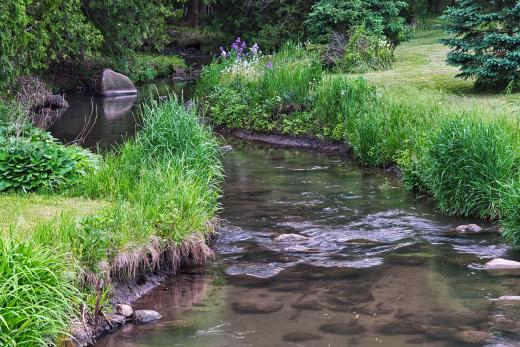Building Resiliency into TU and Our Work
Resiliency is defined as the capacity to recover quickly from difficulties. It’s fast becoming a signature characteristic of both the instream restoration work we do and the chapter building activities that we’re undertaking.
By building resiliency into our trout streams and our TU Chapters, we ensure our volunteer efforts will serve future generations well for years to come. It’s our legacy that we’re protecting.
In the face of a changing climate, the most obvious impacts on our Wisconsin landscape have been the increase in intense rain events and flooding. We’re quickly learning what in stream habitat can hold up to these floods and what cannot.
Instream habitat restoration techniques are constantly evolving. We’re fortunate to be able to work alongside professionals at the county, state, and federal levels who recognize this.
If we’re going to continue to raise money and put in volunteer sweat equity on instream habitat, it’s essential that we stay on the cutting edge of these techniques. As we’re developing project plans, we need to be asking ourselves how a proposed root wad, rock weir, plunge pool, or LUNKER structure will hold up over time.
We also need to recognize the greatest threat to our beloved trout in Wisconsin is drought. Researchers have shown through climate models that these coming drought years could put enough stress on fish to significantly reduce brook and brown trout populations.
And yes, those are computer models and predictions that could be off by some measure of statistical noise, but the risks are too high to leave this up to chance.
It’s easy to forget about drought when we’re in the middle of a wet period and our groundwater aquifers are fully recharged. But there are things we can be doing right now to give our trout a fighting chance in the future.
This is the time to look at the headwater areas of our resources and make sure they are protected. Strategic land acquisitions, conservation easements that form buffers in the riparian corridor, and wetland restoration and enhancement can all play a role in keeping the cold water running.
Likewise, we need to come to terms with the management of our groundwater resources. These are not unlimited supplies ripe for exploitation, they are the valuable reserves we need to have in place when the dryer times come. Whether you’re a conservationist, a municipality providing water to your community, or a business who relies on access to clean water to run, we all have a responsibility to manage groundwater appropriately.
These forward looking approaches will serve our watersheds well, and we can apply these same principles to our volunteer organization.
The pandemic of 2020 presented us with some of the biggest challenges we could ever face as a volunteer organization.
I’ve been inspired to see TU respond to those challenges on all levels. Americans flocked to the outdoors in numbers never seen before, and most of our natural areas were ready for them, due in large part to past volunteer work by TU and others.
We’ve created virtual events to keep our membership engaged. Project planning has continued. Advocacy and policy initiatives continue to advance. And we’ve found new avenues for fundraising opportunities.
Many of us are suffering from video conferencing fatigue, but these are valuable tools for TU Chapters to have and utilize in the future. Virtual leadership meetings give new volunteer leaders an opportunity to participate in an efficient manner. I don’t think “virtual” will replace our face to face meetings entirely, but they will have a place in how we operate in the future.
I expect TU Chapter and Council communications to continue to evolve as new platforms expand our ability to tell compelling conservation stories. Many of us instantly recognize the power a good photograph, and we’re ready to make the logical next leap to short videos. The cell phone has put many of these tools within easy reach.
There has never been a better time than right now to get more involved in your local TU chapter. Each one of us brings a unique skill set to the volunteer table, and your unique skills make our organization more resilient and effective.
We’re finally starting to see some light at the end of the dark COVID19 tunnel, and I’m sure many of our Chapters and volunteers are ready to resume (somewhat) normal activities again. As we do, be thankful for the volunteer efforts that have built such resiliency into our organization.
We’ve certainly been put to the test, now it’s time to respond.
Much Respect,
Mike Kuhr
State Council Chair


